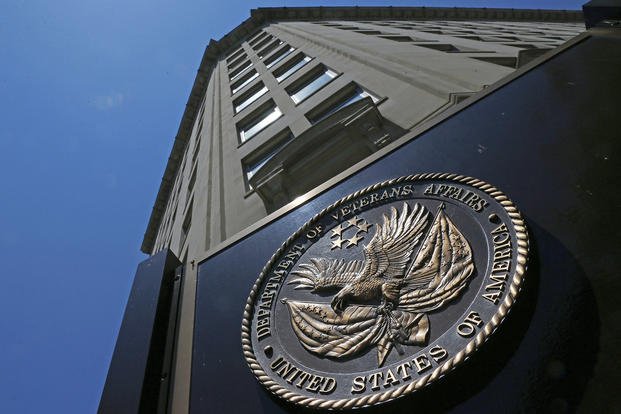The Department of Veterans Affairs has ended a seven-year-old policy that required claims processors to work mandatory overtime, a move enabled by increased hiring and efficiency, according to the VA's top benefits executive.
Under Secretary for Benefits Joshua Jacobs announced Tuesday that most staff will no longer be required to work up to four hours extra each week, although they still may volunteer to work up to 20 hours of overtime each week.
Those not affected by the new policy, which Jacobs said is effective immediately, include claims processors who handle claims for radiation exposure; sexual assault; contaminated water at Camp Lejeune, North Carolina; pension claims; and any claims not related to disability ratings.
Read Next: Army Advocates Use of Generative Artificial Intelligence by Soldiers as Other Services Are Hesitant
Claims processors at the Veterans Benefits Administration have been required to participate in mandatory overtime since 2017 to handle the influx of claims. VA officials have for years tried to end the practice to prevent burnout and improve employees' work-life balance but have been unable to do so given the sheer number of claims filed each year.
Jacobs said during a press conference Tuesday, however, that the VBA workforce of 34,000 has "gone above and beyond to deliver these earned benefits," allowing the administration to change the policy.
"I have never thought that mandatory overtime is a sustainable operating practice. ... As I've traveled across the country meeting with our employees, I have often been asked, 'When are we able to make some changes?' And as we've looked at our production levels, as we looked at the workforce levels, I felt it was prudent for us to make this change," Jacobs said.
VA processed and completed nearly 2 million claims in fiscal 2023, roughly 16% more than it handled the previous year.
It also has received a record number of claims with the passage of the PACT Act, the landmark legislation that expanded health care and benefits for millions of veterans exposed to environmental pollutants while supporting combat operations overseas.
Since the legislation was signed in 2022, the VA has received 1.65 million PACT Act-related claims. As of July 6, the VA had more than 970,000 pending claims and 274,000 claims older than four months, up from roughly 165,000 a year ago.
But it is processing the claims at a faster pace than previously. According to VA officials, before 2022, the department had just three days in which it processed more than 8,000 claims per day. In the past two years, however, VA claims processors adjudicated 8,000 claims on 182 days.
Jacobs said that the department has increased staffing by 33% in the past two years and has provided increased training, including refresher courses for longtime employees.
On June 6, the administration also held a department-wide stand-down to "enhance the employee work experience," Jacobs said.
"Investing in our employees matters and can ultimately yield significant returns for our veterans and survivors," he said.
Jacobs could not say how many claims processors still will be subject to mandatory overtime, given the number of exceptions to the policy. He said the exceptions were made for certain types of claims because they require "more timely decisions."
"We will assess as we watch our work in those areas progress if and when we can make changes ... and transition them to voluntary overtime," Jacobs said.
He added that the new policy was driven by feedback from employees and a desire to end an onerous requirement, not by limits placed on the department by the Fiscal Responsibility Act, a 2023 law that capped agency budgets.
Related: VA Plans to Cut 10,000 Jobs This Year on Medical Side of the House














